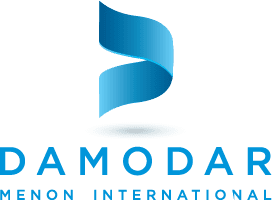Thinking about placing your bets on antimicrobial fabric manufacturers in India? You could be looking at raking in three times the profit by 2026. Here’s why.
In 2021, the antimicrobial textiles market was worth USD 10.7 billion. But fast forward to 2026, and it is expected to hit a whopping USD 14.7 billion, riding a smooth 6.5% compound annual growth rate (CAGR) from 2021. With the rising demand for medical textiles in both clothing and non-clothing uses, antimicrobial textile companies in India are gearing up for some serious expansion in the years ahead.
How Does Antimicrobial Application Work for Textiles?
Top textile companies in India add antimicrobial technologies to materials during manufacturing as a tropical or finishing treatment. When applied, antimicrobial agents penetrate fabric layers and form a protective surface that lasts after multiple washes.
Antimicrobial Fabrics’ Impact on the Textile on the Textile Industry
In the past few years, antimicrobial fabrics have taken center stage, fueled by an increased focus on health and hygiene. With the recent spike of COVID–19–like viral infections in China and India, emergency protocols have been established all over these countries.
The demand for cleanliness spans diverse sectors, including packaging, automotive and transport, consumer goods, building and construction, media and entertainment, and food and beverages, with medical and healthcare leading the charge. As we look ahead, the pharmaceutical and healthcare industry is anticipated to be the primary driver of the antimicrobial fabric market during the projected period.
Another significant catalyst accelerating the expansion of antimicrobial fabric manufacturers in India is the improvement in consumers’ disposable income, an enhanced lifestyle, and increased investments in health and hygiene.
The Importance of Antimicrobial Fabrics for Textile Companies in India
Various industries use antimicrobial fabrics for a wide range of applications. However, it is primarily utilized by the health and hygiene sector. But it also benefits fabric manufacturers and apparel creators in the following ways:
Improves Fabric Durability
Cotton buyers buy treated greige fabrics from DMI and TEXchange Global, as it increases resilience by safeguarding against harmful bacteria. This protection prevents the breakdown of fibers over time, minimizing visible staining, fading, and discoloration. Products created from antimicrobial fabrics are designed to last longer, requiring less frequent replacement, and contributing to reduced overall waste.
Extended Hygiene
End users experience sustained cleanliness as products remain germ-free between regular cleanings. This seamlessly complements existing cleaning practices, ensuring a consistently clean environment.
Effortless Integration with Diverse Textiles
Advanced antimicrobial technologies can seamlessly integrate into various textiles during manufacturing, preserving the material’s original ‘look and feel.’
Smart Investment
Backed by a proven track record of safe use across industries, antimicrobial fabric manufacturers will run a low-risk business. As a supplier, you can deliver additional product benefits without the hefty price tag, making it a sound choice for quality and affordability.
Opportunities
Antimicrobial textiles have become increasingly popular among researchers, manufacturers, and consumers as the demand for higher safety and improved quality of life grows. Cotton buyers are now seeking products of better quality that contribute to a safer and enhanced lifestyle.
In response to this demand, market researchers are tirelessly working to create antimicrobial textiles that are not only skin-friendly but also cost-effective and environmentally sustainable. Meanwhile, fabric manufacturers in India are actively engaged in a competitive race to set their products apart by incorporating various active agents or utilizing different fabrics.
This dynamic interaction between consumer expectations and industry innovation drives advancements in the antimicrobial textile sector, shaping a landscape where safety, quality, and environmental considerations are at the forefront of product development.
Threats
The market dynamics of antimicrobial fabric are closely tied to the pricing and accessibility of raw materials. Among these materials is cotton, treated with antimicrobial agents like silver, zinc, copper, and quaternary ammonium compounds (QACs).
The daily fluctuations in the prices of these raw materials depend on various market factors. Therefore, these fluctuations can contribute to the already high production costs. Such costs, in turn, can potentially impact the overall demand and supply of antimicrobial textiles within the market.
For more useful insights and textile trading news, follow Damodar Menon International on social media and subscribe to TEXbulletin. Send “TEX-BULLETIN” to WhatsApp 98 10 40 10 45 for a FREE subscription.

